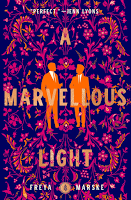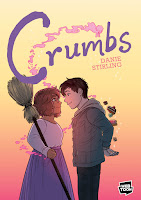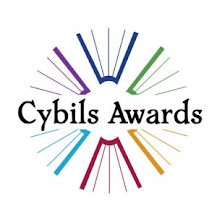I had the pleasure of hearing Dan Yaccarino, author-illustrator of picture book- slash early reader-hybrid City Under the City, speak on a panel at Picture Book Palooza last month. He and the other panelists had very interesting things to say about how they create images to go with picture book words – telling their stories through images as well as (or married to!) the author’s text. Yaccarino’s title is science fiction for very young readers, and its words AND images evoke a whole different world.
Bix lives with her family in a city where people rarely talk or play together, and no longer read books. Instead, they stare at small portable screens, monitored by giant eyeballs. The Eyes are here to help! With everything. But Bix would like to do things for herself. Running from an Eye, she discovers another world: the City Under the City. There, she befriends a rat who leads her to a library and its treasure trove of books and knowledge. As she explores the abandoned city, she’s thrilled to learn about the people who lived there, with no Eyes. But she misses her family, and decides to head home, where, just maybe, she can help defeat the intrusive Eyes—and show her people how to think for themselves and enjoy each other’s company.Told through Dan Yaccarino’s stunning graphic style, this page-turning picture book/early reader crossover will spark a new appreciation of reading, books, independence, friendship, and family.
The people in Bix’s city are watched by the Eyes, who see, direct, and know all. Bix, unlike the rest of her family, does not like the help of the eyes, and tries to refuse their directions (this does not go well). One day she spots a rat and follows it through a crack and into… a hidden city below her own. There she sees many strange sights and learns to read books, which teach her about a great many things: history, music, art, animals, and friendship, for starters. She also lives by herself and cares for herself for the first time. But after a while, and a great deal of learning, Bix wants to go back to her family. What will happen next? Revolution!
With a premise that’s a cross between 1984 and The City of Ember, City Under the City takes some classic science fiction tropes and adapts them for young readers. While the idea of an AI surveillance state that controls humanity and doesn’t allow for noncompliance is a familiar storyline in modern media, it may be brand new for little ones just starting to read independently. Bix’s flight to an unknown world below, where mysteries abound and are unraveled, is another familiar premise – for adults. City Under the City has the potential to create and/or nurture the next generation of science fiction fans.
Yaccarino indicates full immersion in the worlds above and
below through use of a limited color palette – purples and yellows for the
world above, and deep orangey-red for the city below. He also includes allusions
in his illustrations that adults will be sure to pick up on: distinctive landmarks,
a very famous painting, etc. His style (ink on vellum, rendered digitally) relies
on fluid linework in varying shades, architectural details, inventive use of perspective
and lighting, and that limited color palette described above. The result is a
picture book with: A) more to discover upon each re-read, and B) a deceptive
simplicity with layers of meaning. It's also impeccably designed, with fun and unusual end papers and some page spreads that read like a graphic novel.
In all, City Under the City is simple enough for independent reading, but also complex enough (particularly with the help of images) for a science fiction premise. I loved the plot, the cheerful illustrations, and Bix’s can-do attitude. It is sure to delight readers young and old.
Recommended for: storytimes and independent reading for children ages 4-7, for anyone looking for unique picture books with distinctive plots and artwork, and for young science fiction and fantasy aficionados.
City Under the City will be available from mineditionUS/Astra Books for Young Readers on November 15, 2022.
Fine print: I received an advanced copy of this title at Picture Book Palooza. I did not receive any compensation for this post.



















